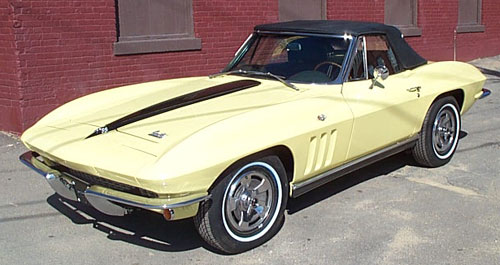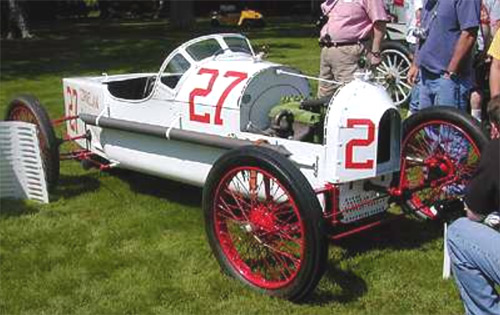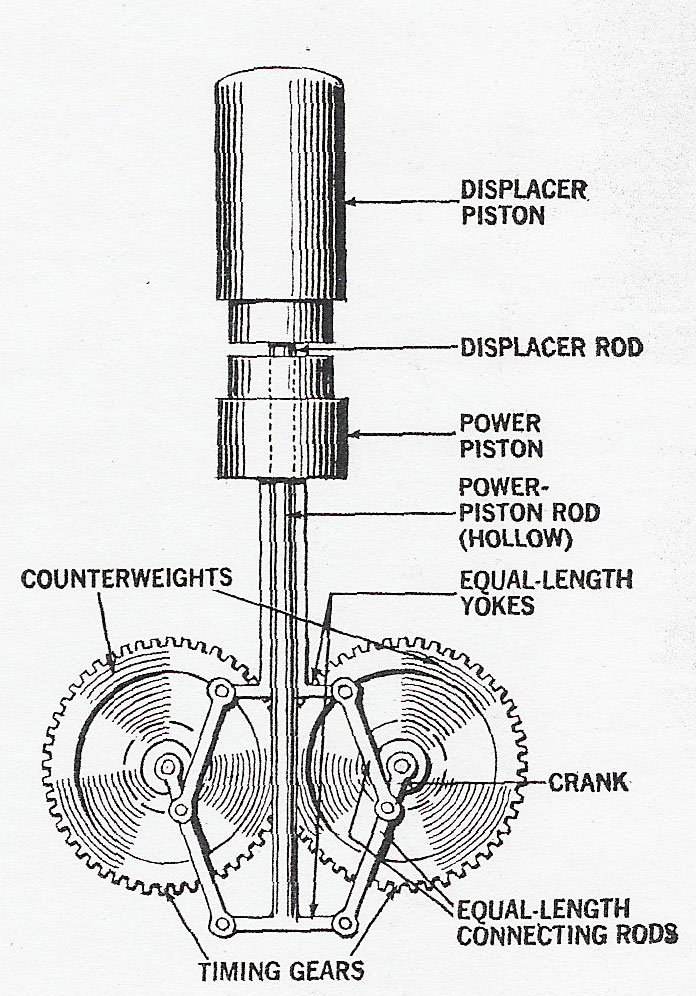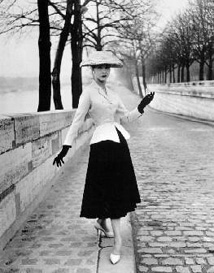Our 1966 Corvette Convertible – The Story
 My interest in Corvettes probably started back in 1954 when some friends and I attended the General Motors Motorama Show in Boston where the highlight of the show for me was the fairly new Chevrolet Corvette display. However it would be 21 years later that I would become the owner of one of these cars.
My interest in Corvettes probably started back in 1954 when some friends and I attended the General Motors Motorama Show in Boston where the highlight of the show for me was the fairly new Chevrolet Corvette display. However it would be 21 years later that I would become the owner of one of these cars.
One day a family friend told us that a relative of his was going to sell his 1966 Corvette convertible and asked if we might be interested. The next thing I know the car is in our drive with instructions to drive it for a few days. This we did and after looking the car over and considering the condition of the paint and body and how badly it seemed to handle we sent the car back with a definite no answer.
During the time I had the car I had rolled the driver door window down several times, the last time, the thing failed, I ended up replacing the entire assembly inside the door. (I guess you could say this was the start of the restoration of this car though I didn’t even own it yet.)
About a week later we were on our way to BTV to catch a plane to Disney World with the kids, and as we turned off from Williston road on to Airport Drive, parked in the lot of the gas station on the corner was this same Corvette with a for sale sign on it. Don’t know what sort of chemistry took place, (I think I actually felt sorry for the car, it looked like it never had any TLC) but when we arrived at the airport I found myself in a phone booth calling the owner and telling him we would take the Corvette.
When we got back, the long road to this year started. My first project was to get the handling to a point where I could at the very least keep the car in my lane of the road. Some one had put wide Craggar alloy wheels and tires on the car, which was a misfit. I removed them and replaced them with OEM wheels and tires w/original wheel covers and spinners. Wow what a difference. Little did I know this was to be the beginning of my continuing Corvette education.
I very soon learned that mid years Corvettes have a parking brake system that was unique to them at that time. Although this design is used on many GM models currently, back then they were not compatible with Vermont weather, and when they fail, the procedure in the service manual didn’t really help. When I finally got to the inside where the working parts resided I couldn’t believe what I saw; it was one solid mass of corrosion. Thankfully I learned of a supplier who produced these parts of stainless steel. Great, the parking brake now works but the jubilation was short lived, as I found out, things, it seemed went downhill from here.
As I drove the car, it seemed that every couple weeks I would have to bleed the brakes. This lead to researching the brake system and learning that because of the design, using solid mounted calipers w/ constant contact pads to rotor, plus corrosion caused by moisture absorbed by alcohol based brake fluid, pumps air into the system. This required a complete disassembly of all four calipers (each having two halves) and master cylinder which I did, and sent them to a vendor to be sleeved with stainless steel. Reassembled them and installed them. One more problem solved. But the list continued. Over the next few years I replaced ball joints, springs, shocks, stabilizer links, all front and rear rubber bushings, wheel bearings, seals, trailing arm pins and bushings, rotors and pads
Since the very beginning the engine ran smoothly, but smoked moderately, however, eventually I detected a slight noise in the lower end. Before things got worse I pulled the engine and transmission. Did a complete overhaul on the engine,( machining done at a vendor’s shop) disassembled the transmission and installed a refresh kit which all took me a little over a year. This included installing a new radiator and rebuilding the windshield wiper/washer motor, carburetor, distributor and fuel pump.
During this period of time the inspection sticker had expired, so on the day of final completion I had made an appointment for an inspection at 4:oo PM that afternoon. However on the way didn’t a trooper stop me and give me a ticket. I tried to explain the situation, even asked the officer to call the station but said they didn’t have to do that. I sent the ticket in requesting a trial which never happened of course, as the assistant D.A. (young enough to be my son) let me off after hearing my story.
One thing that always bothered me about this car was that the electric clock never worked. So one day I took it all apart was able to find the manufacturer’s name and to my surprise I was still able to purchase parts (at car shows). I had the face silk-screened and reinstalled it. This was great, but it made the rest of the dash look terrible. You guessed it, out came the main dash, matter of fact out came the whole interior seats carpet, belts, everything. This was the point where we decided that we couldn’t reinstall a new interior unless we had the body repaired and painted. Since I didn’t really have a place to do body work or paint and my own body was now needing some restoration of it’s own, we had no choice but to have this done by an out side source. While this was being done I totally restored the seats and re covered them. In 1966 some of the options available to a purchaser were seat headrests and shoulder belts. These are available through Corvette restoration parts suppliers so I added these two features when finally installing the interior.
While my car was out to the shop for painting and bodywork it was learned that the frame was very weak in some key areas so the decision was made to remove the body and restore the frame. It was completely sand blasted repaired and painted and the body replaced. Again the parts to do this are available through Corvette parts suppliers.
We completed this phase of the restoration in mid May of this year, as you can see this was an on going project from day one, however we did on occasion have periods when we could drive and enjoy the car. Even when the car was off the road being worked on, we still attended Corvette shows to search for parts and network with other Corvette people to learn and exchange information. In spite of all the pitfalls, it’s been a great ride. Many thanks to my wonderful wife Jeanne, the kids Wendy and Greg, and a lot of other people, who all have either bought parts, or pawed through many boxes of used parts at car shows or just were there when I needed them in support of this project. Right now there are left over parts still in each of our bedrooms.












 Have you visited your local second hand clothing shop lately? If not, you are missing a bet. Oh, I know what you are thinking…. that you wouldn’t want to wear something that someone else has already worn and may be out of style. I think you should take a second look; things are not what you think.
Have you visited your local second hand clothing shop lately? If not, you are missing a bet. Oh, I know what you are thinking…. that you wouldn’t want to wear something that someone else has already worn and may be out of style. I think you should take a second look; things are not what you think.